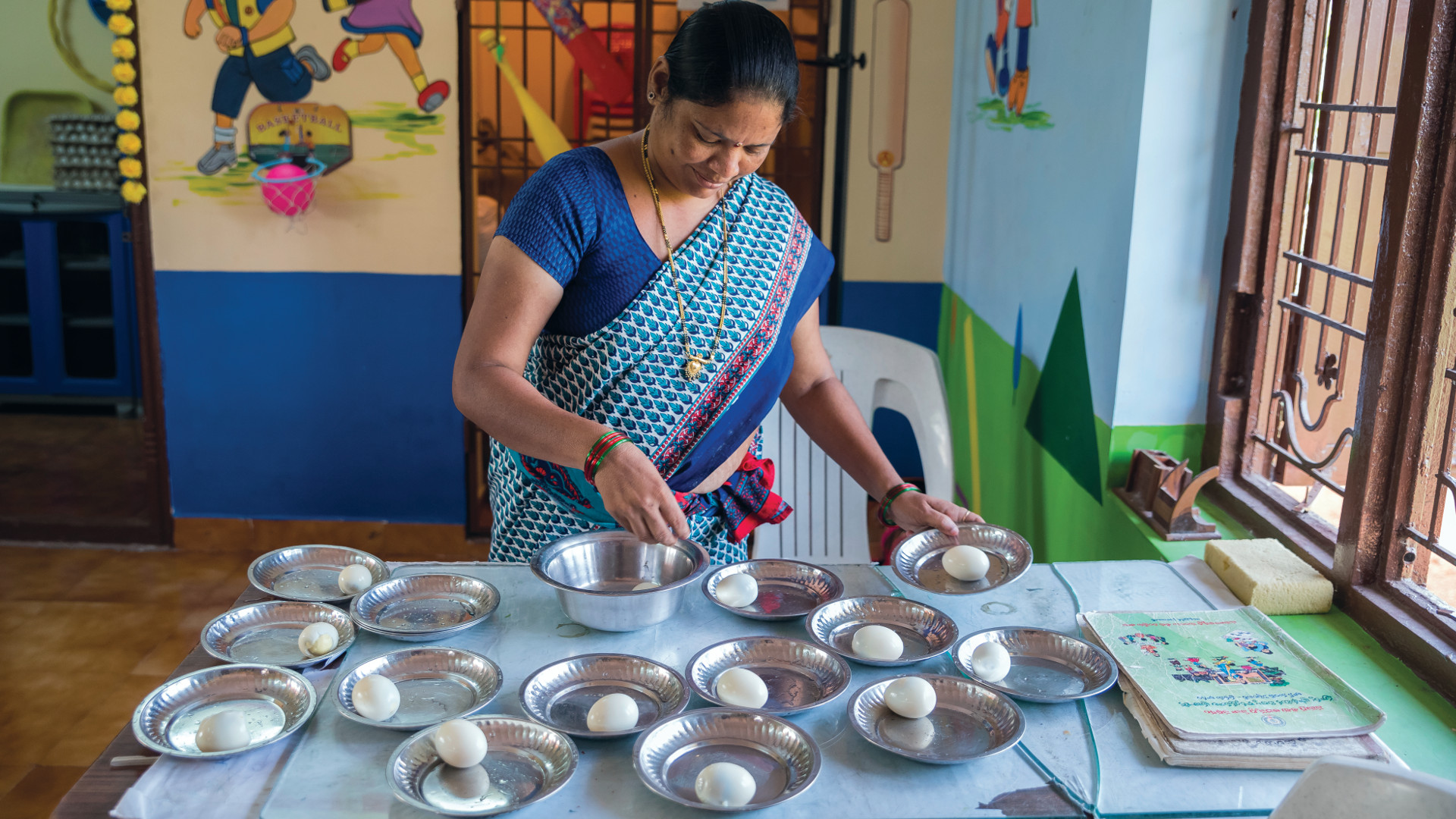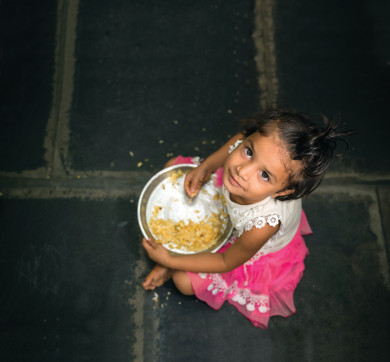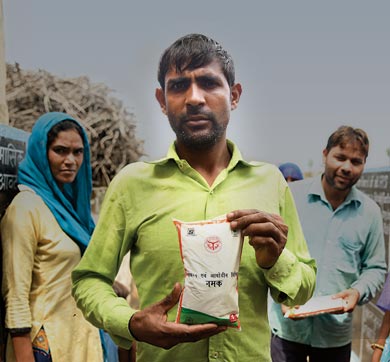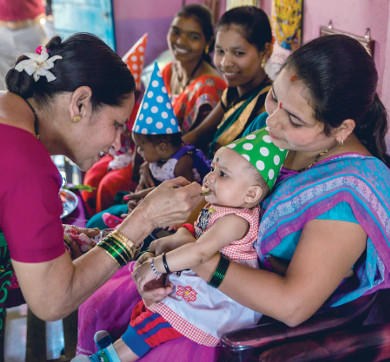November 2019 | 1419 words | 5-minute read
"I grew older by three years in three minutes,” says Shailendra Shukla, recounting the flare up at a meeting of childcare centre workers that he had convened in Aliganj in Uttar Pradesh. “They were from a village that was performing badly on nutrition indices. I was pushing them to do better and they were stonewalling me. Then one of the workers loses it and starts yelling at me. Soon others follow her lead and the place erupts — 70 women shouting at me, the lone male in the room.”
Mr Shukla “managed to deal with the situation somehow,” pacifying the irate gathering before bringing them over to his point of view about pulling together for the nutrition cause. It was another small victory for Mr Shukla, a 32-year-old Lucknow boy and lapsed engineer nearing the end of a 15-month work stint that has provided him with first-hand experience of the struggles and the successes that arrive intertwined at the frontlines of the malnutrition battlefront.
To solve and resolve is in the nature of the job for Mr Shukla, a Swasth Bharat Prerak (or motivator) who is one among a band of 370 men and women helping with implementation, coordination, monitoring and more in the National Nutrition Mission. A partnership initiative involving the Indian government’s Ministry of Women and Child Development and the Tata Trusts, the prerak programme (SBPP) is all about providing support. Its pillars are the preraks, placed inside governmental administrative setups in districts across 27 states and six union territories of India.
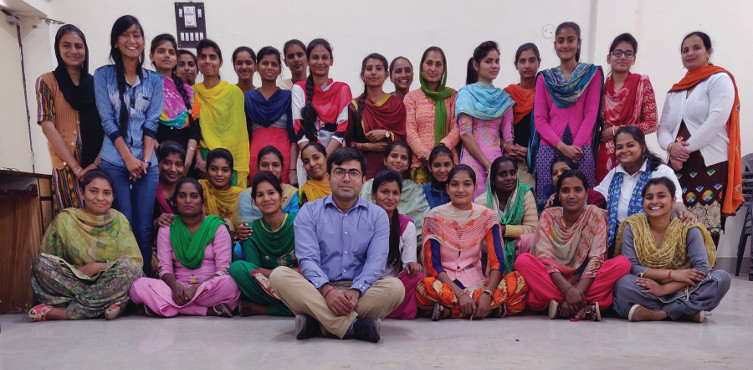
The preraks are selected — many of them through campus interviews at elite institutions — and trained for a 12-month fellowship programme. Mostly young, entirely enthusiastic and with an inclination to make a contribution in the rural hinterland, they are tasked with a bagful of responsibilities. Crucial among these is coordinating the nutrition efforts of multiple government ministries and departments at the state level and in the districts.
Technical competence, management skills, leadership abilities and a commonsense approach in dealing with the complexities of administrative functioning characterise the preraks. They operate under the district collector’s office and interact with a range of constituents: women and children, anganwadi (or childcare) workers, officials, village councils and the wider community.
SBPP is based on the ‘Zila Swachh Bharat Preraks’ archetype developed for the Swachh Bharat Mission, the path-breaking endeavour for a cleaner India. The attempt is to duplicate in nutrition what the Zila Swachh Bharat Preraks accomplished in sanitation. Launched in January 2018, SBPP was ready to hit the ground running when the Nutrition Mission got underway two months later.
Hands full
There has been much running for the preraks to do: training anganwadi workers and assisting in the rollout of software that reduces the paperwork they are currently burdened with; managing and monitoring community-based nutrition events and fairs in villages; implementing projects to upgrade childcare centres; and interacting with officials across the governmental hierarchy to improve coordination. The preraks have their hands full.
“This was my first experience in a government environment and I learned how the system works,” says Neha Sharma, a 32-year-old who trained as a dentist and is posted in Jaipur district. “I also learned about the community and the issues they face. I got solutions for these issues from the community itself. You have to listen.”
Dr Sharma, recruited for the programme from the Tata Institute of Social Sciences (TISS) in Mumbai while she was completing her master’s degree, has seen the truths of life in rural Rajasthan at close quarters. It is not a pretty sight. “Malnutrition is never really considered a disease,” she says. “Villagers don’t know about stunting and wasting in children. Unless the child is skeletal in appearance, they ignore the problem. Going to a health centre or a doctor could mean a day’s wages lost for the parents.”
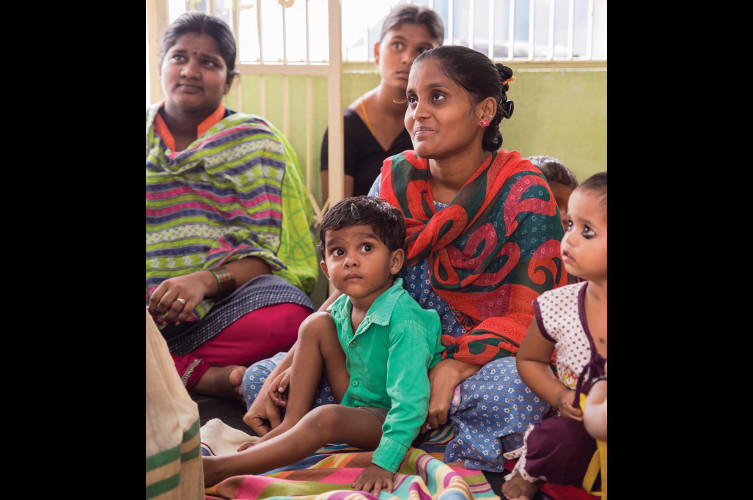
From the government’s side, what’s expected of the preraks is high. “There was little time to settle in,” says Prachi Mishra, a 28-year-old prerak from New Delhi who has been attached to the Lucknow hub of the Nutrition Mission in Uttar Pradesh for the past eight months. “The official machinery thought I would know everything, but I was new to nutrition. I had so much to learn: about the mission, the programme, the jargon even.”
The early days in the job are inevitably the trickiest for the preraks and a big part of it lies in arriving at a win-win equation with the local administration.
Mr Shukla, who has worked with villagers in Fatehpur and Lucknow districts, had an up-and-down time of it. “I have been with three district programme officers in the Mission and each was different,” he says. “The first was helpful from the off. The second was difficult to start with but I earned her trust quickly enough. The third was the toughest of all; I couldn’t meet him for the first seven days. Turned out very well in the end, though.”
For the preraks, it pays to understand what to keep in focus. “Anganwadis are at the core of the mission and I concentrated my attention there,” says 27-year-old Tilak Parewa, who was with the Swachh Bharat Mission as a prerak before the nutrition project beckoned. Also a TISS graduate, Mr Parewa has worked in the Banswara and Dausa districts of Rajasthan and is richer for the knowledge gained. “You have to understand the structure, identify problems and devise solutions. If it’s transformation you seek, you have to go to the top — and you need help from the top.”
The bottom line is getting the job done. “You have to be resourceful and ready to undertake any task that may come up on any particular day,” adds Mr Shukla. “You cannot afford to dwell on what you cannot change; you have to get on with the job at hand. You have to quickly learn the government’s way of functioning. Officers at the district level are always welcoming of someone who is willing to go the extra mile. Personally speaking, I’ve learned that you don’t have to wield power to get good work done.”
The Tata Trusts were meticulous with the selection procedure for the preraks. “One of the objectives of this project is to introduce young and budding professionals to the realities of rural India,” says Preeti Sharma, head of human resources with The India Nutrition Initiative (TINI), the flagship programme of the Trusts in nutrition. “We have hired from premier educational institutes and experienced people as well, several of them from the social sector.”
Ms Sharma and the recruitment team sifted through more than 10,000 applications to settle on the 370 preraks now in the programme. One reason for the rush is the attractive compensation on offer — Rs 55,000 a month — among the highest for a fellowship in India. TINI could afford to be picky.
Trained to deliver
Training the new recruits is a rigorous and intensive affair. The preraks spend time at the central and state headquarters of the Mission ahead of being deployed in their district. “Our recruits include doctors, engineers and MBAs,” says Ms Sharma. “We don’t expect them to come from a nutrition background but they need to know the basics of the subject. We orient them and we have experts from the ministries and UNICEF to educate them about policies and processes, malnutrition and the logic of the initiative.”
“The first rule we tell the preraks about in training is that they have to work with the system, not ‘manage’ it,” says Bhuvaneswari Balasubramanian, who heads the programme. “There’s no guarantee that a smart prerak will be a winner. You have to factor in the government ecosystem he or she works with and the dynamics among the different players involved. But I would say 99% of our preraks are wiser for the experience of being in the project. As for the government, a smart young resource is definitely a plus for any administration.”
The central government wants the Trusts to expand the programme and have preraks positioned in every one of India’s 719 districts. It’s easy to see why. “They are a breath of fresh air,” says Gayatri Rathore, the secretary of Rajasthan’s Women and Chid Development Department. “They bring a third-party perspective to the Nutrition Mission and they are in a pivotal position to tell us what is going right and where we are lagging.”
—Philip Chacko
Source: Tata Trusts' Horizons, September 2019 issue
